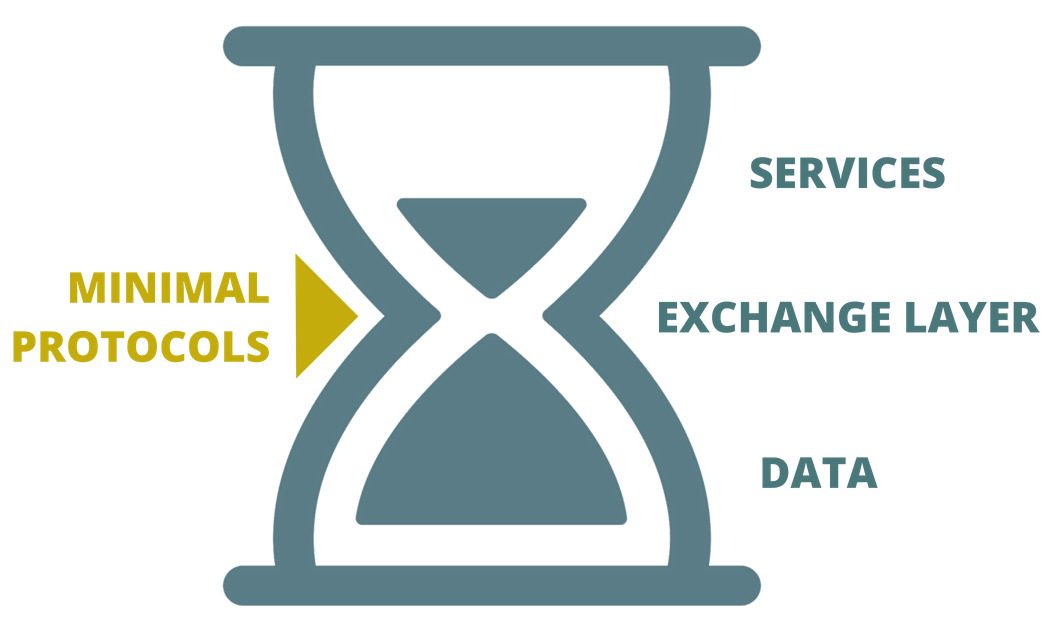On the Hourglass Model, for FAIR
The hourglass model is an approach to layered system architecture where a middle layer is intentionally constricted in order to support flexibility in the implementation of layers above and below. Above the spanning layer are applications, and below the spanning layer are supports.
Beck (2019) provides a formal analysis of the hourglass model.1 His Hourglass Theorem conveys that
a weaker layer specification has fewer possible applications but more possible supporting layers than a stronger layer specification.
The GO FAIR initiative is trying to identify a plausible hourglass approach to infrastructure for FAIR data and services:

Their labeled hourglass icon (reproduced above) gives a good sense of the tradeoff. The spanning (exchange) layer needs to be strong enough to facilitate a minimal variety of useful services, but must also be weak enough to facilitate the greatest possible variety of supporting data that services can suck up through the straw.
References
Beck, M. (2019). On the hourglass model. Communications of the ACM, 62(7), 48–57. https://doi.org/10/gj3fnj ↩︎